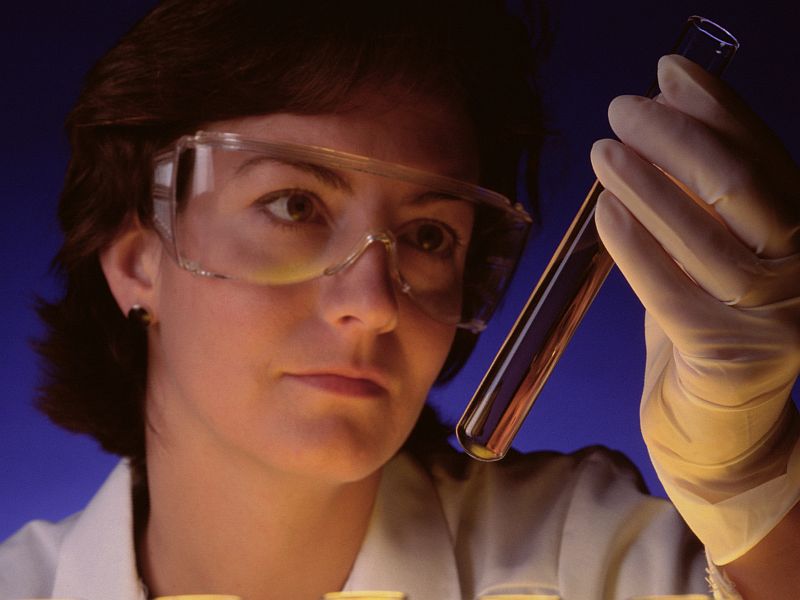TUESDAY, Oct. 31, 2017 (HealthDay News) — The Cancer Moonshot Initiative now has a detailed road map designed to cram a decade’s worth of medical advancement into half that time.
A new report, authored by more than 50 leading U.S. cancer doctors, highlights 13 priority areas for improving the medical response to cancer, along with measurable goals and a specific timeline for meeting each of those objectives.
The plan is intended to help “accelerate existing progress so that we deliver in five years what would have historically taken 10,” said Dr. Cliff Hudis, chief executive officer of the American Society of Clinical Oncology and co-author of the report. It was created by The Lancet Oncology Commission on Future Research Priorities in the USA.
In late 2016, Congress appropriated $1.8 billion for cancer research funding over the next seven years for the so-called Cancer Moonshot, said commission co-chair Dr. Elizabeth Jaffee, president-elect of the American Association for Cancer Research and deputy director of the Sidney Kimmel Comprehensive Cancer Center at Johns Hopkins.
The new report converts an earlier set of more general recommendations issued in 2016 by a Cancer Moonshot Blue Ribbon Panel into “clear milestones, metrics and measures that could be assessed so that we and the general public could take the measure of our progress over the next five years,” Hudis said.
Jaffee, Hudis and others presented the report at a media briefing Oct. 31.
The research priorities it highlights include “a focus on prevention, a new model for drug discovery and development, a vast expansion of patient access to clinical trials, and an emphasis on targeted interventions to improve cancer care for underserved groups, specifically children, cancer survivors and minority groups,” Jaffee said.
Priority areas set out by the commission include:
- Precision cancer prevention through new vaccines and therapies, as well as policies that promote healthier and more active lifestyles.
- Improved cancer detection by increasing rates of screening and improving examinations of high-risk groups of people.
- A sped-up drug discovery process, including expansion of the cancer center drug pipeline and reduced development costs through partnerships.
- Better ways to precisely assess tumors, to match the right drugs to the right cancers.
- Expanded patient access to new drugs through larger clinical trials, including increased participation of pediatric and minority patients.
- Identification of new and better ways to use the immune system to battle cancer.
- Increase the proportion of children and teens treated at large cancer centers and increase the access of pediatric patients to new drugs and clinical trials.
- New emphasis on supportive treatments, including better symptom management and palliative care.
- Expanded use of radiation therapy to treat cancer that has spread beyond the initial tumor and in combination with immunotherapy.
- Improved imaging technology to help doctors better assess the effectiveness of cancer treatments.
- Progress on cancer surgery technologies, including minimally invasive procedures, procedures guided by imaging and margin assessments conducted during an operation.
- Increased sharing of cancer data, including expansion of data “lakes” containing information on patients, treatments, toxic effects and U.S. Food and Drug Administration approvals.
- More focus on health disparities and access to care, including improved access to new treatments in underserved parts of the country.
Each measurable goal is tied to a specific time frame in which it should be accomplished. For example, the report calls for more than 10,000 cancer specimens to be collected from patients within two to four years as part of efforts to improve cancer prevention.
“Anybody who’s done strategic planning knows that this is a critical step,” Hudis said of the goals and measures set by the commission. “You have to identify what’s possible, what’s feasible, what you can assess and then you task yourself with delivering.”
The public is very supportive of this effort, he added, noting a recent Harris Poll that found that people would approve of higher taxes and deeper deficits if that meant better cancer treatment and prevention.
“We have a rare moment now of unity, with our political forces and our general public aligned behind the goals of the Moonshot effort,” Hudis said. “What we have to do is deliver.”
More information
The commission’s report is available on The Lancet website.
Copyright © 2025 HealthDay. All rights reserved.

